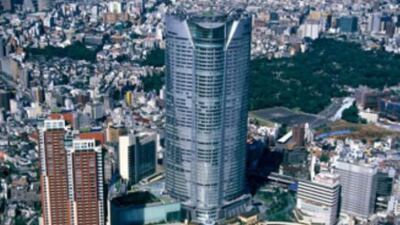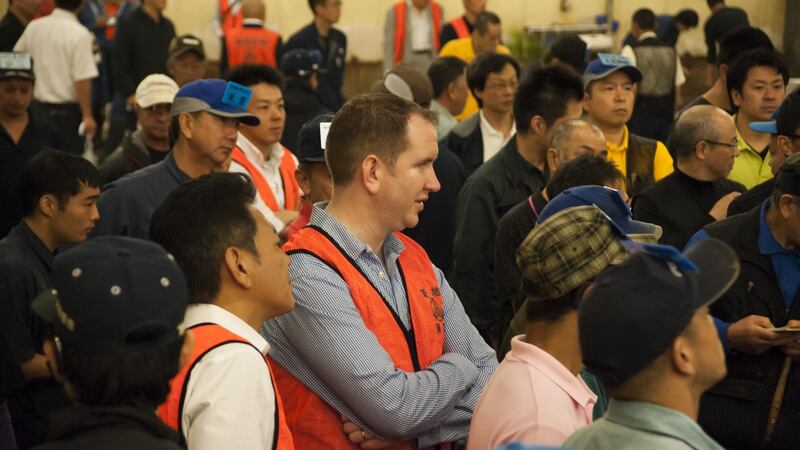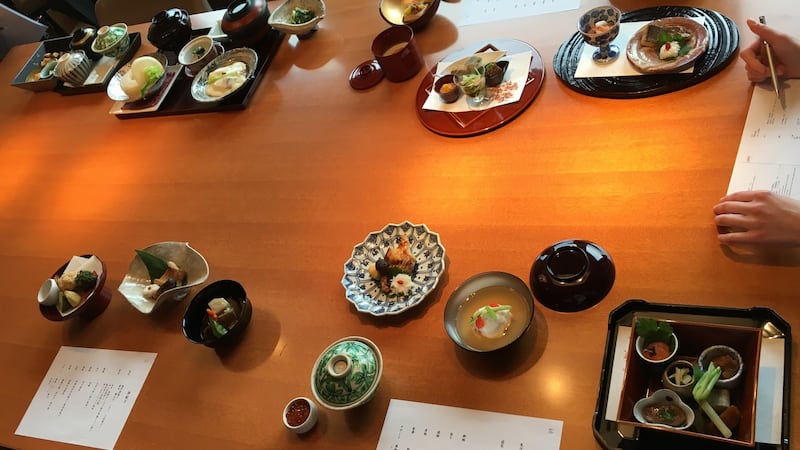As part of Food Month at The Irish Times, Irish chefs working abroad tell us about their jobs. Liam Crotty is executive chef at Roppongi Hills Club in Tokyo.
Where are you from and where did you train?
I am from Churchtown South, near Ballycotton in East Cork. I worked weekends and summer jobs in the Midleton area before moving to Kenmare, to the Park Hotel after catering college. I spent five years in Kenmare, mostly in a fantastic seafood restaurant called Packies, with Martin Hallissey, before moving to Dubai in 2007, when I joined Hyatt Hotels. I've been with Hyatt for 10 years now, in four countries and six properties.
Where are you currently working?
I am executive chef of Roppongi Hills Club, managed by Hyatt. It is a private members' club on the top of the iconic Mori tower of Roppongi Hills. Mr Mori owns a number of hotels managed by Hyatt, as well as Roppongi Hills Club.

What took you to Japan?
I've been in the Middle East, the Maldives and India with Hyatt and it was an ambition of mine to gain more Asian experience. When this opportunity came about within Hyatt, I was delighted to take it.
What type of restaurant do you work at?
I oversee the operation of eight outlets and a banquet space for 250 – 300 covers. On a daily basis, we cater for approximately 800 guests in the club.
Does the restaurant have a signature dish?
Currently we have just completed the Matsutake mushroom season. They are most popular on a set menu, and they range from €80 to €1,000 per kilo. This month, we have a blowfish set menu. This fish is deadly if handled incorrectly. I have two chefs licensed to prepare this set menu. Just this morning we visited our Wagyu beef supplier; this beef along with Kobe beef are the top of the range in our tepanyaki restaurant, Amakawa.

What does your daily work routine involve?
9am: Review the operation from the previous night and the forecast for the coming days. Each outlet's reservations and specifics of the meal periods.
10am: Leadership meeting to discuss the business for the day.
10.30am: A walkthrough of each kitchen to meet the team and spot check on food safety compliance.
11.30am: Check the preparations for our banquet functions and set up. Business lunches will start in the outlets by noon and need to be served in an efficient time frame of 45 minutes.
3pm: Chefs briefing to review the forecast for the coming days and discuss and findings or feedback.
4pm to 6pm: Afternoons generally involve menu presentations, photo shooting for our food and beverage Orbital Magazine, food and beverage promotions discussions, and operation meetings with other departments such as purchasing and engineering
6pm: Being a corporate members’ club our dinner operation is early, so the club is busiest between 6pm and 7.30pm. We have a daily banquet function and often have off-site catering events to do.
How does working in your current job differ from your previous experiences?
Here in Roppongi Hills Club we don't have rooms, so there is no breakfast meal period. We are a private club, so knowing our members is important. Having eight different outlets is a lot to concentrate on, trying to ensure that each is performing at its best and the offerings are diverse enough to keep the members coming back. Tokyo is a world leading city when it comes to culinary diversity, so it's a fascinating place to be.
Or do you work with any very unusual ingredients?
The pride the Japanese have in their ingredients is very evident. Fruits and vegetables are often individually packaged and it is most likely that the nicest apple, pear, orange or sweet potato one will taste will be in Japan.
Is eating out expensive in Japan?
Eating out can very expensive, and there is also a lot of value to be found. Last week, I had a chef friend visit from Ireland and we had a Michelin-star ramen, which cost approximately €12, a fine dining meal with wine pairing for €75 and a Japanese barbecue meal with the best of Hida beef for €75. There may have been a few beers, sake, cocktails and more included in the barbecue meal – it was his birthday.

Where do you like to eat when you're not working?
With my wife and child, I travel around the city trying out the unique offerings of Tokyo. There is lots of traditional street food, from octopus takoyaki to grilled yakitori skewers and the infamous ramen, for which there are hundreds of vendors preparing their noodles and pork broth. A visit to Tsukiji market for a sushi feast has got to be on the agenda, a few times per month.
What should someone visiting Japan not miss as regards a culinary experience?
Sushi. You won't find sushi like this anywhere in the world. A visit to the tuna auction at Tsukiji in the early hours is as cultural as it gets. There are more Michelin stars in Tokyo than any other city, so it promises to be a treat for any foodie who visits.









